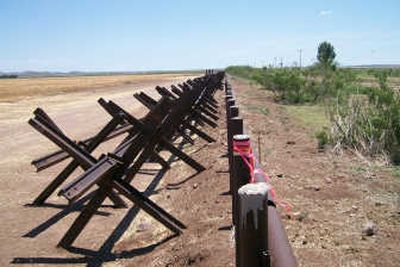Section of border fence mistakenly built in Mexico

COLUMBUS, N.M. – The 1.5-mile barrier along the U.S.-Mexico border was designed to keep cars from illegally crossing into the United States. There’s just one problem: It was accidentally built on Mexican soil.
Now embarrassed border officials say the mistake could cost the federal government more than $3 million to fix.
The barrier was part of more than 15 miles of border fence built in 2000, stretching from the town of Columbus to an onion farm and cattle ranch.
A U.S. Customs and Border Protection spokesman said the vertical metal tubes were sunk into the ground and filled with cement along what officials firmly believed was the border. But a routine aerial survey in March revealed that the barrier protrudes into Mexico by 1 to 6 feet.
James Johnson, whose onion farm is in the disputed area, said he thinks his forefathers may have started the confusion in the 19th century by placing a barbed-wire fence south of the border. No one discovered their error, and crews erecting the barrier may have used that fence as a guideline.
“It was a mistake made in the 1800s,” Johnson said. “It is very difficult to make a straight line between two points in rugged and mountainous areas that are about two miles apart.”
The Mexican government was notified and did what any landowner would do: They sent a note politely insisting that Mexico get its land back.
“Our country will continue insisting for the removal (of the fence) to be done as quickly as possible,” the Foreign Relations Department said in a diplomatic missive to Washington.
When the barrier was built in 2000, the project was believed to cost about $500,000 a mile. Estimates to uproot and replace it range from $2.5 million to $3.5 million.
New Mexico Sen. Jeff Bingaman asked Customs and Border Protection officials to build a new fence on U.S. soil before the old one is torn down.